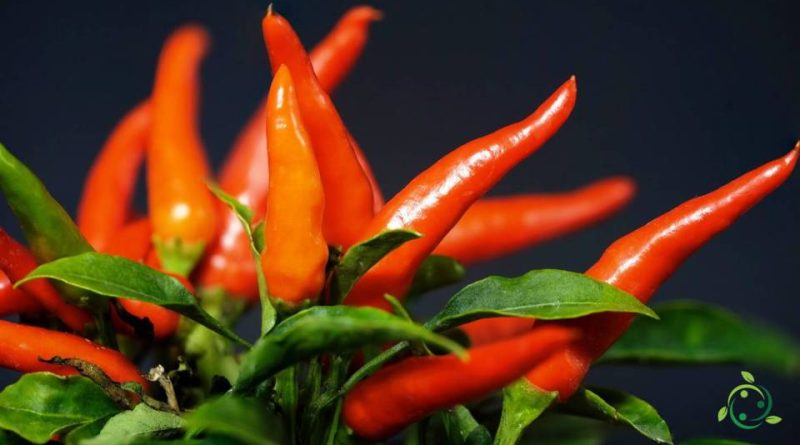Nutritional value of Chilli pepper
Nutritional value of Chilli pepper
Chilli pepper is the common name of the berry of some spicy varieties of the Capsicum genus and used mainly as a condiment.
Features –
The chili pepper, although coming from the same genus as the pepper, differs from it because it contains capsaicin, a chemical compound present in different concentrations depending on the variety, responsible for the spiciness of the berry. The spiciness of a pepper is indicated using the Scoville scale, which measures the amount of capsaicin contained (16 Scoville units are equivalent to one part of capsaicin per million).
Red chilli berries are obtained from different species including:
– Capsicum annuum: cayenne pepper, jalapeño, serrano, Thai, Calabrian pepper, black pepper (also known as black fire violet);
– Capsicum baccatum: Aji Amarillo chilli and Lemon Drop;
– Capsicum chinense: habanero, Carolina reaper, bhut jolokia;
– Capsicum frutescens: the tabasco;
– Capsicum pubescens: the rocoto.
Nutritional factsheet –
The nutritional values of chili peppers can vary both according to the different varieties but also according to the production methods and the soil and climatic conditions where it is grown. Therefore, the following are the indicative average values of this food per 100 g of hot pepper:
– Water 87.7-88.0 g;
– Carbohydrates 8.8-9.5 g;
– Proteins 1.9-2.0 g;
– Fats 0.2-0.4 g;
– Energy value 40 kcal (167 kJ)
Regarding minerals we have:
– Potassium 1870 mg;
– Sodium 91 mg;
– Zinc 1.02 mg;
– Copper 0.228 mg;
– Manganese 0.821 mg;
– Selenium 3.5 µg.
Among the vitamins:
– Vitamin C (ascorbic acid) 31.4 mg 52.3% RDA;
– Thiamine (vitamin B1) 0.081 mg 5.8% RDA;
– Riboflavin (vitamin B2) 1.205 mg 75.3% RDA;
– Niacin (vitamin B3 or PP) 8.669 mg 48.2% RDA;
– Pantothenic acid (vitamin B5) 0.956 mg 15.9% RDA;
– Pyridoxine (Vitamin B6) 0.81 mg 40.5% RDA.
– Folate 51 µg;
– Choline 84.3 mg;
– Vitamin A (RAE) 1324 µg 165.5% RDA;
– Beta-carotene 14844 µg;
– Alpha-carotene 994 µg;
– Cryptoxanthin 1103 µg;
– Lutein + zeaxanthin 5494 µg;
– Vitamin E 3.14 mg 31.4% RDA;
– Vitamin K 108.2 µg 154.6% RDA.
Property –
The chili pepper, due to its particular composition, has important therapeutic properties as well as food.
Recall that due to the capsaicin content present in most varieties of chilli, this can numb the region of the epidermis where it is deposited, so that it is applied locally on the skin to make the pain disappear in patients with arthritis, shingles, diabetic neuropathy, mastectomy and headache.
Studies carried out in 2007 have isolated the QX-314 molecule, which has the property of crossing the cell wall of pain receptor neurons and deinnerving them, thus totally inhibiting any sensation, without affecting the functioning of other neurons. For this reason it can be used as an anesthetic, being indicated for conditions with chronic pain or for situations of acute pain (such as in epidural injections during a difficult birth).
Some studies have reported that regular chilli pepper intake is associated with a reduction in mortality.
In general, chilli also promotes good digestion because it increases the production of saliva and gastric juices.
We also remember that farmers in Africa and the Indian subcontinent use chilli to defend their crops from elephants. Chillies are spread on fences and other structures to keep elephants away, as they have a very sensitive nose that allows them to smell them, pushing them away. This minimizes the possibility of dangerous confrontations between people and elephants.
In addition, the chili pepper extracts can perform an excellent insecticidal and acaricidal action.
Finally, the capsaicin extracted from chilli is used in the preparation of an aerosol as a non-lethal weapon.

